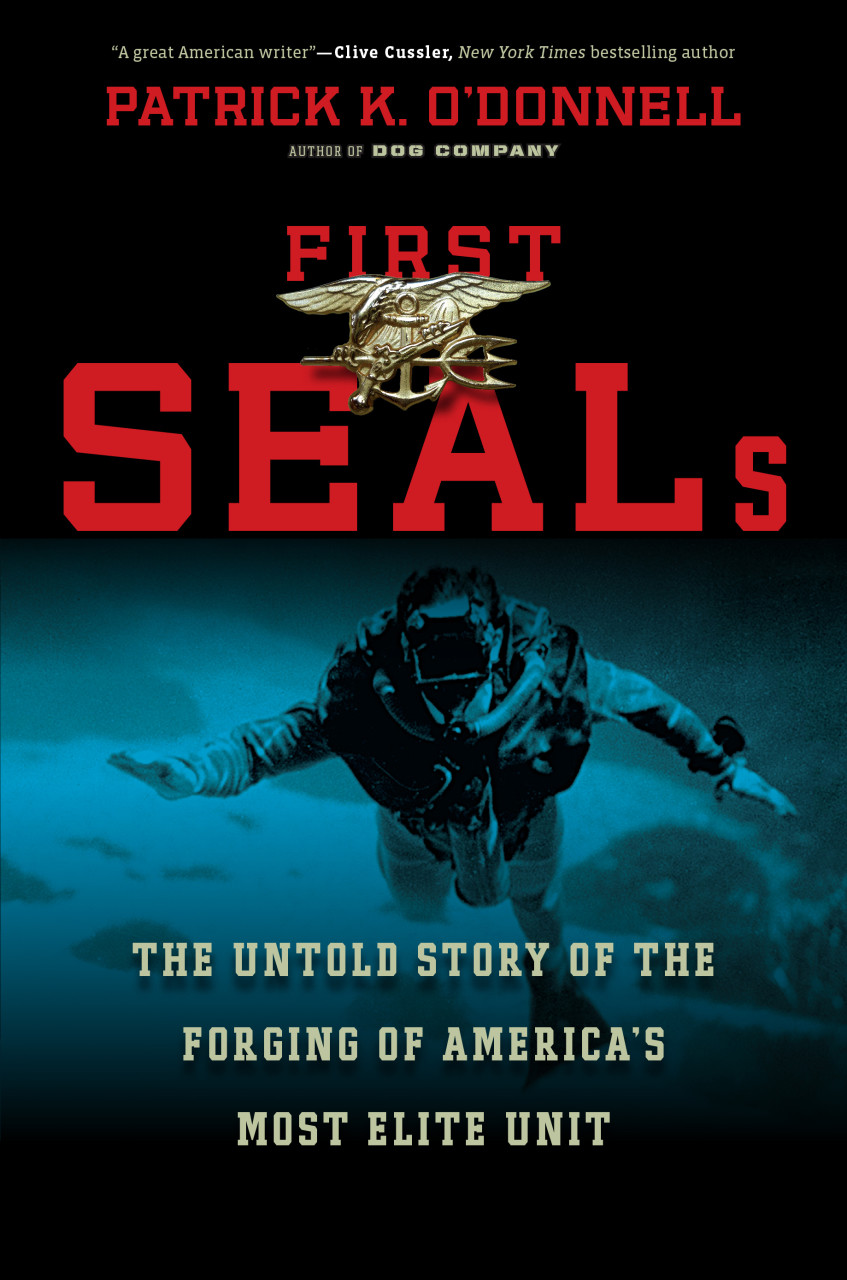Advertisement
The First Navy SEALs

The Navy SEALs that conducted the raid that killed Osama Bin Laden were a high-tech fighting force equipped with the latest equipment. The men who were their precursors landed on beaches in the dark on two-man motorized rafts that were called "flying mattresses."
The origins of today's Navy SEALs date back to the early days of World War II, when the Office of Strategic Services started what came to be known as the Maritime Unit, and the first experiment on underwater swimming with scuba-type gear was conducted in a hotel swimming pool in the Washington, D.C. area.
The Maritime Unit went on to serve with distinction in the war, with missions led by men like the actor Sterling Hayden and Jack Taylor, an adventurous dentist from California, who was captured behind enemy lines and survived a German concentration camp.
Here & Now's Alex Ashlock spoke to Patrick O'Donnell, a combat historian who has written a new book about the birth of the Navy SEALs, called "First SEALs: The Untold Story of the Forging of America’s Most Elite Unit."
Book Excerpt: 'First SEALs'
By Patrick K. O'Donnell
NOVEMBER 1942, SHOREHAM HOTEL, WASHINGTON, D.C.

At the intersection of Connecticut Avenue and Calvert Street in Washington, D.C., stands the well-appointed Shoreham Hotel. Built in 1930, the impressive art deco structure boasts 832 luxurious guest rooms, several elegantly furnished ballrooms, high-ceilinged dining rooms, and a sumptuous lobby illuminated by a host of glittering chandeliers. The hotel features nearly every amenity a discerning trav-eler or even a president could desire. At the behest of Franklin D. Roosevelt’s staff, the hotel quietly added a special ramp and elevator to accommodate the president’s wheelchair, allowing the Shoreham to serve as the venue for FDR’s first inaugural ball and host inauguration galas for every subsequent president throughout the twentieth century.
The Shoreham has had more guests and hosted more functions than history has recorded, but on the evening of November 18, 1942, a small group of men gathered at the hotel to engage in an activity that would directly and substantially influence the evolution of America’s military. They came not to stay in one of the suites or to eat in the dining room or even to relax with a drink in one of its lobbies. Instead, they gathered around the hotel’s expansive indoor pool, which at the time was one of the largest in Washington, D.C.
Advertisement
On that cold November night, Jack Taylor was gearing up for the evening’s demonstration while guards posted at the pool doors turned away any guests who came down to enjoy a swim. A renowned Hollywood dentist, Taylor put his livelihood on hold during World War II to serve his country. He was an avid swimmer and lifelong adventurer who had a penchant for racing yachts, sailing solo halfway around the world, and flying airplanes. An ultimate survivor, he once escaped from an Alaska gold mine after being trapped for two days following an earthquake. After Pearl Harbor, Taylor volunteered for the U.S. Navy, which initially relegated him to a dull dental position on a ship. Later, the highly secretive Office of Strategic Services (OSS) sought to recruit him, and Jack enthusiastically volunteered to join its ranks.
This swim was unlike any other in Taylor’s lifetime. He dipped his toes into the 60-plus degree water and put on a face mask, carefully checking the hoses and buckles of the newly invented Lam-bertsen Amphibious Respiratory Unit (LARU), a breakthrough underwater breathing device that was a precursor to SCUBA (self-contained underwater breathing apparatus). Initially constructed in the inven-tor’s garage from an old World War I gas mask and a bicycle pump, the LARU was the first closed-circuit rebreathing device that would be used in American military underwater operations. That night at the Shoreham pool, America would finally have a device that would enable it to compete with the Axis powers’ much more advanced and sophisticated underwater military operations. The LARU provided the technology America needed to pioneer the formation of an elite and highly effective American commando unit that would ultimately do it all: sea, air, and land operations.
Taylor secured the oxygen tank and scrubber, then plunged into the pool. The water enveloped his body as he remained submerged, breathing with the assistance of the LARU, swimming one lap after another. Normally exhalation underwater would cause a stream of air bubbles—a telltale trace that could reveal the presence of any diver. Any sign of bubbles remained absent as Taylor’s audience watched him swim without coming up for air.
The small retinue of men present for the testing included the device’s inventor, twenty-five-year-old Christian Lambertsen, a medical student. In the coming months, Lambertsen would covertly engage in testing and development of the LARU, traveling back and forth to Washington, D.C., from Philadel-phia, where he attended the University of Pennsylvania’s Medical School. Sworn to secrecy, he couldn’t tell anyone—not even the school dean—the true reason for his trips.
Standing next to Lambertsen was British officer Commander H. G. A. Woolley of the Royal Na-vy, on loan to the OSS. Recently Woolley had been serving on the personal staff of the British Chief of Combined Operations and the British Joint Staff Mission in Washington, D.C. General William J. Do-novan personally chose him to “assist in the study of British methods of training operatives and raiding forces.” Prior to the war, Woolley lived in Hollywood, where he was a successful scriptwriter for several major studios. It is likely Taylor and Woolley ran in the same circles and were friends before the war. The bearded World War I veteran possessed the dynamic transformative leadership capabilities that could take an idea and develop it into a new form of warfare. With very few resources, he quickly built a new organization that would reshape intelligence gathering and warfare for generations to come.
On that cold November night, Taylor, Woolley, and Lambertsen made history. Their successful experiment in the Shoreham’s pool spawned the beginnings of one of America’s most elite military units—the U.S. Navy SEALs.*
*U.S. Army Special Forces, the Green Berets, also trace their combat swimmer program to the OSS Maritime Unit.
Excerpted from the book FIRST SEALS by Patrick K. O’Donnell. Copyright © 2014 by Patrick K. O’Donnell. Reprinted with permissions of Da Capo Press.
Guest
- Patrick O'Donnell, combat historian and author of "First SEALs" and "Dog Company." He tweets @combathistorian.
This segment aired on November 11, 2014.